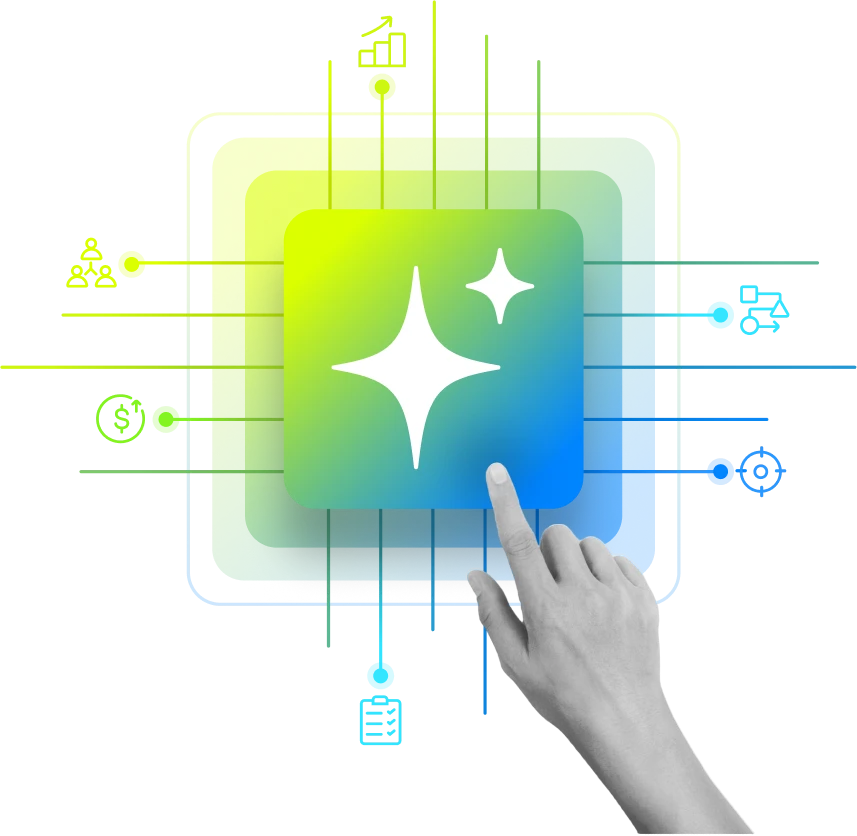In Key Account Management , we have all witnessed the evolution of data management from its manual form to the present day digital avatar. The term ‘digital’ itself encompasses the evolution from spreadsheets and basic sales tracking software to the highly specialized Key Account Management software and solutions we see today.
While the power of technology to transform the way we manage and interact with our most valuable customers is well accepted across verticals, choosing the right technology and its scope can still be a challenge for many sales professionals.
A good place to start may be to think about the areas of transformation and the potential impact in those areas. Over the years, we have recorded a dizzying array of parameters to consider, and that is not including the unique circumstances of specific industries and organizations. We have distilled the former down to what we call ‘HUMOR’, a starting point to approach the overwhelming challenge of choosing technology that works for you.
Harnessing the Hidden Value of Key Accounts
Most salespeople would agree that in the twentieth century increasing the top line was synonymous with maximizing the number of customers. Over time new statistics such as customer acquisition costs gained focus and in the twenty-first century, retaining and maximizing the potential of existing customers, particularly of Key Accounts, has become critical to increasing the top line.
But we have all faced the drawbacks of departmentalization and specialization that make it difficult for individuals in large companies with multiple products and competing divisions to see the company, or the customer, as a single entity.
One way in which key account management tools can help address this lacuna is by creating a comprehensive grid, with the company’s offerings on one axis and customer requirements on the other. Each square in the grid can be analyzed to ascertain whether the company has engaged with the customer for a particular product offering and whether it succeeded in exploiting the customer’s buying potential.
Technology can be a great enabler to reveal the untapped potential of Key Accounts. DemandFarm’s Whitespace Analysis tool uses a Key Account’s financial and relationship mapping data to calculate and color code squares in a grid.
The colors represent the health of engagements or orders and new business in the pipeline. The analysis reveals white spaces in the grid or unexplored white space opportunities for new business from that account. Targeting white spaces unlocks the hidden value of Key Accounts and maximizes the potential of existing customers.
A case in point is a multinational pharmaceutical company whose sales force was grouped into divisions based on therapy. Salespeople from multiple divisions were visiting some of the same hospitals and doctors, yet each division had its own list of Key Accounts. The company implemented KAM technology and white space analysis revealed that several specialist doctors were being targeted by only one or two therapy divisions, although in practice these doctors wrote prescriptions covering a wide range of the company’s products. As a result of the analysis, the company re-engineered its sales focus and was able to achieve significant growth by exploiting the potential of Key Accounts.
Unified Vision, Unified Action
At some point in our careers, most of us have witnessed or been part of a vision, mission or brand identity exercise and the time, effort and cost associated with it. But often we observe that when it comes to sales, companies are reluctant to invest in KAM technology. When we dig deeper, we find that investments or budget are not the hurdles, it’s the worry that a unified action plan won’t have all the details or will be too rigid that is the hurdle.
How does KAM technology work?
The software includes all the details by pulling in data from CRM (Customer Relationship Management) and ERP (Enterprise Resource Planning) systems. Technology is used to aggregate the data, identify gaps, prompt users to fill in these gaps, analyze the data and calculate and display financial and relationship metrics for each Key Account. The result is a unified platform for Analysis, Planning, Tracking and Presentation of everything related to Key Accounts. It results in a single system with a macro view that can be drilled down to micro details.
As a user, you can fill in details, make changes and view plans and performance depending on your requirements and access permissions. The CEO might be interested in the Grandstand™ view, the Sales Head in the Account Review, the Key Account Manager in his achievement to target and salespeople in the customer’s organizational hierarchy and contact information.
Making your Data work for you
Companies create and maintain some form of sales data, whether by using software like Salesforce or an in-house methodology. The financial data are usually recorded using accounting software and shared through spreadsheets. This is a classic case of fragmented data in silos that do not have a common interface.
As an Account Manager, you have probably waded through this minefield of data, collecting information from various sources to try and get a complete picture of the account. You have experienced first-hand the time and worry associated with this process. Fail to collect all the relevant data or make a mistake in transcribing it and all your plans go awry.
And no matter how you interpret the data, someone is sure to disagree. In all likelihood this thought has crossed your mind more than once; “Stop wasting your Account Manager’s time collating information, analyzing it, generating reports and creating presentations.”
We would like to add “Let these activities be done in the most efficient way- using technology.” KAM software is designed to avoid re-entry of data, seamlessly interfacing with a CRM or ERP system and pulling in data from multiple sources. The time saved and the improved quality of information and analysis enable the Account Manager to focus on growing Key Accounts instead.
Ongoing Engagement
Is Strategic Account Management all about relationships? About the salesperson who grew the account, risking his time cultivating a start-up and reaping the benefits as it grew and became his Key Account? And what is your risk as a company, a CEO or a Sales Head? Are you willing to risk losing your salesperson and your Key Account too?
KAM follows the Pareto principle, the 80:20 rule. 20% of your accounts bring in 80% of your business.
If you believe that retaining Key Accounts is crucial, then continuity should not be person dependant, and that is how technology can transform the practice of Key Account Management.
Every Sales Head would love to make sales personnel sign a non-compete clause. But that is just not tenable. We believe the alternative is to use technology to capture the essence of relationships, to record and track meetings with various stakeholders at the customer’s side and to categorize them as friendlies or barriers.
Technology busts the myth that KAM is all about relationships. Yes, relationships do play a crucial role in KAM. But our experience in developing and implementing KAM Technology shows that documenting relationships, recording client needs, monitoring deliverables and measuring satisfaction plays an equally important role in nurturing Key Accounts and ensuring they stay with you, whether your salesperson or the customer’s decision-maker changes.
Relationships and Communication
Most sales personnel have experienced how CRM software tracks the periodicity of client interactions using an activity log. But you are probably equally aware that creating a meeting plan or tracking the percentage of achievement is not enough to grow a Key Account. That is where KAM technology changes the picture. It takes CRM data, analyzes it and converts it into usable information and metrics on the health of the account.

We would like to show you how technology interprets communication patterns over time, analyzing not just the frequency but also whether the communication was operational, managerial, strategic or multilevel and the customer satisfaction for engagements.
Based on these parameters software calculates the relationship strength of Key Accounts and draws attention to lacunae if any. Simultaneously, it records and displays all the people within your organization who interact with the customer, people from different divisions and departments as well as different hierarchical levels.
This empowers the account manager to reach out to others within the organization and use the strength of their relationships to grow Key Accounts. You can assign a status to people in the Key Account’s organizational hierarchy, based on their affinity for your company and its products. This helps the account manager navigate the customer’s hierarchy by utilizing positive relationships and sidestepping detractors.
As we see it, technology’s role in strengthening KAM practices just begins with HUMOR! There could be many other benefits, including competitor analysis, account tracking, action prompts and more. Do you have KAM technology benefits you’d like to share? We’d love to hear from you at [email protected]
To experience the benefits of KAM technology for your organization contact DemandFarm for a 30-day trial now!

